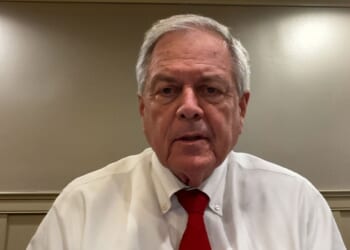(LifeSiteNews) — An Australian state has experienced a startling increase in the number of medically-assisted deaths.
Last week the Western Australian government released its latest data on assisted suicide, showing a 63 percent increase in the number of deaths. While 293 patients accessed assisted suicide during the 2023–24 period, there were 480 assisted suicides from 2024-25.
This increase means that voluntary assisted dying (VAD) deaths now represent 2.6 percent of the 18,380 total deaths in Western Australia. The youngest person to die after taking a VAD drug was only 23 years old, although the median age of patients was 77.
This is the fourth annual report made by the government since the introduction of the Voluntary Assisted Dying Act 2019 and reveals much about the realities of assisted suicide.
The report begins with a poetic description of the impact of assisted suicide, out of place in an official bureaucratic report. Using the metaphor of a pebble dropping into a pond creating concentric waves, the report’s author endeavors to show empathy for patients and their support networks:
When a pebble drops into a pond of still water there is an initial splash followed by a series of concentric waves that steadily flow to the edge of the pond. So it is, when an eligible person who will die soon, and is suffering in a manner unacceptable to themselves, makes the choice for voluntary assisted dying. The choice of the person at the centre is felt by their community and the dedicated people who work to support the voluntary assisted dying process […]
However, a closer look reveals an attempt to set the stage for increased funding for the services, as the report highlights the need for more trained practitioners, pharmacists, care navigators, and voluntary assisted dying coordinators within the Western Australian [WA] health system.
Patient reasons for choosing to die
According to the act, eligibility criteria include having at least one disease, illness, or medical condition likely to cause death within a period of six months, or 12 months for neurodegenerative conditions, and is causing suffering to the person that “cannot be relieved in a manner that the person considers tolerable.”
Although proponents would have the public believe that most patients choose to die because they are experiencing intolerable pain, the report shows that this is not the case. Rather, while some patients do cite pain as their reason, a greater number say they made the decision because they feared a loss of enjoyment or loss of autonomy.
The majority of patients, 68.3 percent, gave as their primary reason for choosing to end their lives being “less able to engage in activities making life enjoyable, or concerned about it.” In fact, for three out of four reporting years, this has been cited as the primary motive.
“Losing autonomy or concern about it” and “Losing dignity or concern about it” were the second and third most common reasons, both at 58 percent. Less than half of the patients cited “inadequate pain control or concern about it” as their main reason for pursuing assisted suicide.
Horrific testimonials
Included in the report were quotes from family members and medical professionals which indicate the failure of patient support networks to encourage them to choose life over an early death.
The following account, made by the friend of a patient, exemplifies the tendency of many caregivers to guide suicidal patients into “voluntary assisted dying” rather than support them in choosing life. The choice discussed is not between a natural death and medical killing but between solitary suicide and assisted suicide:
During that early stage [following diagnosis], [my friend] was more convinced than ever that [suicide] was the way to go. Much of my discussion with [my friend] was trying to convince him that the VAD process available to him would be a far better outcome for the family. It was interesting to see the changes in his thinking as he progressed through the different visits from and phone calls with the VAD team…. Initially he was sceptical, then moved to wanting to self-administer and finally, after his final meeting, he accepted that having [Care Navigator] and [practitioner] take on this final task was the correct way to go.
Another account shows how that the idea of assisted suicide is thought to be preferable to patient-initiated suicide:
[My father considered] suicide…. One shudders to think of the accidental consequences which may arise by … suicidal misadventure. The horrors of illegal procedures are best avoided by facilitating slick information, process and access…. Thank goodness VAD is now available in WA. My father passed away very peacefully, surrounded by his loving family.
The stories reinforce the false narrative that assisted suicide is dignified and painless, even though this is often not the case. One report from Oregon, for example, states that patients may take up to 47 hours to die – this is hardly the “quick and painless” option put forward by proponents of VAD.
The Western Australian testimonials include several statements which seem designed to support a push for the removal of practitioner conscience rights, including the following:
“Conscientious objection and the [private hospital’s] approach seem to be causing distress to patients and family, both … during the admission and also continuing after their discharge, particularly when transferred elsewhere for end of life care. It is also causing delays that, for many patients, mean they will not be able to access VAD.” — Health practitioner
“… Another barrier [to accessing VAD] is the provision of hospice and public hospital care by the Catholic sector. If my father had received palliative care [at our local faith-based hospice] he would have been blocked from preparatory consults for VAD.” — Family member
This attack on conscientious objection is already underway in the eastern Australian state of Victoria, where an amendment to its Voluntary Assisted Dying Act means that doctors opposed to assisted suicide are now forced to refer patients to another doctor who has no objections, making them complicit in the VAD process.
Flowery language reveals a hidden truth
While the poetic language found in the report’s introduction seems to be an attempt to humanize an immoral practice, it unwittingly reveals one of assisted suicide’s realities. The pond metaphor, suggesting that “the choice of the person at the centre is felt by their community” is apt, for entire communities are impacted by a declining interest in choosing life lived to its natural conclusion over deliberate death.

















